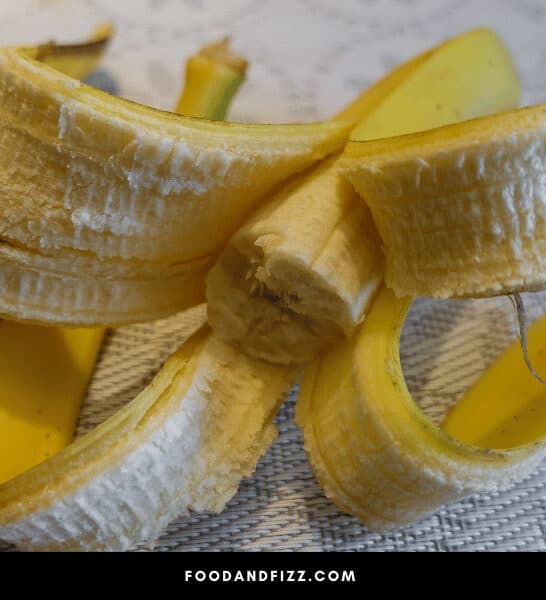In this article, I am writing about the black seeds inside bananas.
Bananas are the most popular tropical fruit, according to Researchgate. There are more than 300 varieties. One of the most common types of bananas is the Cavendish banana or Musa acuminata.
Bananas (Musa spp.) we eat today are almost seedless. However, seeds in bananas are perfectly normal.
Are black seeds inside bananas safe to eat?
It is safe to eat black seeds inside bananas. The black spots inside cultivated bananas are aborted seeds. Cultivated bananas do not produce natural seeds, as they are cross-bred numerous times. It is safe to eat these sterile seeds.

Wild bananas vs. Cultivated bananas
Wild bananas grow seeds that are used for reproduction. A wild banana will have much larger seeds compared to a cultivated banana.
Cultivated bananas are sterile triploids. The female flowers are infertile, producing little to no pollen. They have been x-bred many times not to grow viable seeds anymore.
Genom separation is used inside bananas to produce seeds. The number of chromosomes has to be just right for that. Since the cultivated bananas are modified, this is no longer possible.
The bananas will abort the ovule or seed production. What remains is a small aborted seed. Seeds inside bananas are not poisonous.
My Banana is black on the inside
The main reasons for bananas becoming black on the inside are:
- As part of the ripening process (Safe to eat)
- Because of the chilling process (Safe to eat)
- From mishandling or dropping the fruit leading to black center syndrome (Not safe to eat)
Always do a smell test and only eat a banana if it smells fine and is not crunchy. Bananas can be yellow outside and black inside. In case of doubt, always discard the banana.
Black center syndrome
The black core of a banana can be crunchy. It should never be eaten as it might be a fungal infection. This fungus causes black center syndrome. It’s named Nigrospora fungus.
Bananas With Seeds (Banana Seeds)
Bananas with seeds are diploids. They are wild bananas and produce fertile seeds, according to the African Journal of Biotechnology.
Banana seeds are big and black. Fertile seeds are often found in ornamental bananas but not in dessert bananas.
The seeds have thick skin and are hard to germinate. The extensive coating is associated with dormancy. The water intake of banana seeds is slow, and the seeds become dormant when dry.
Therefore soaking seeds in water before planting them is a way to speed up germination.
Do all Bananas have seeds?
All bananas produce seeds. Whether they are cultivated or wild. But only wild bananas produce viable seeds. The cultivated bananas produce sterile seeds. These are not entirely produced as the banana plants abort the process.
Nutritional Value of Bananas
According to Harvard University, bananas are an excellent source for:
- Potassium
- Magnesium
- Manganese
- Vitamin C
- Vitamin B6
- Fiber
The tastiest bananas are the golden ones, with a few black spots starting to build.
How to ripen a banana faster
Unripe bananas, such as the Cavendish banana, will be hard and green when unripe. To ripen bananas faster, you can put them in a paper bag to accelerate the fermentation process. Just close the bag and wait 12-24 hours for them to ripen faster.
Are Overripe Bananas Good For Banana Bread?
The best bananas to use for banana bread are overripe bananas. The darker the bananas, the more sugar they contain. The better they will taste. As long as the bananas used for banana bread do not contain any mold or fungus and do not smell off, they are perfectly eatable.
Banana Propagation – How to Grow a Banana Tree
Cultivated bananas are propagated through pups. Vegetative reproduction from plantlets growing at the base of the plant is the only viable way. Only wild bananas can be propagated through seeds.

